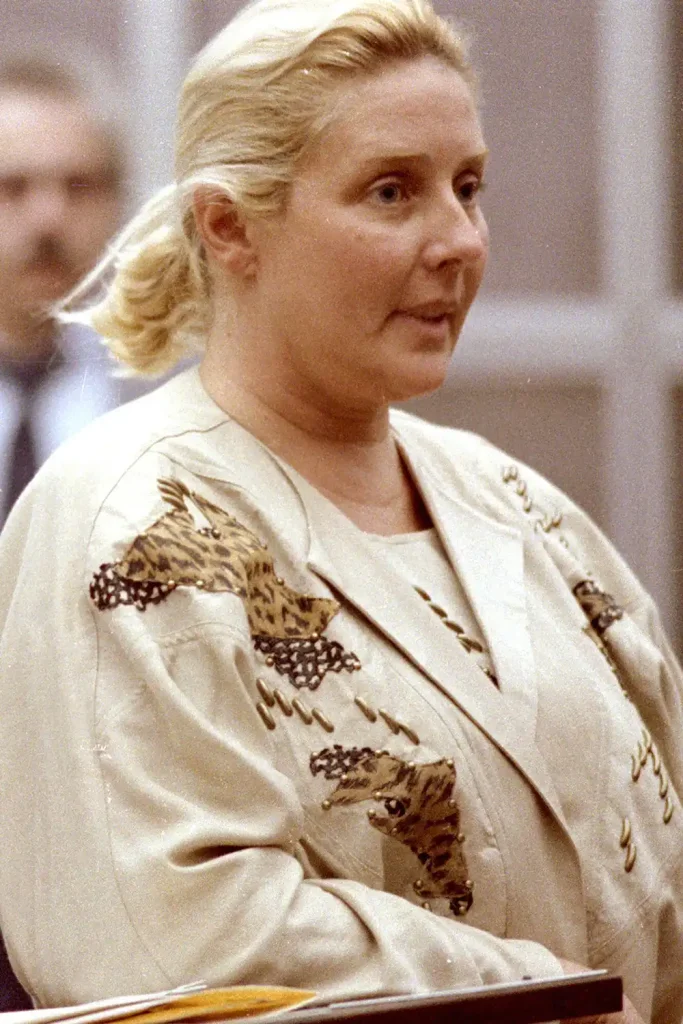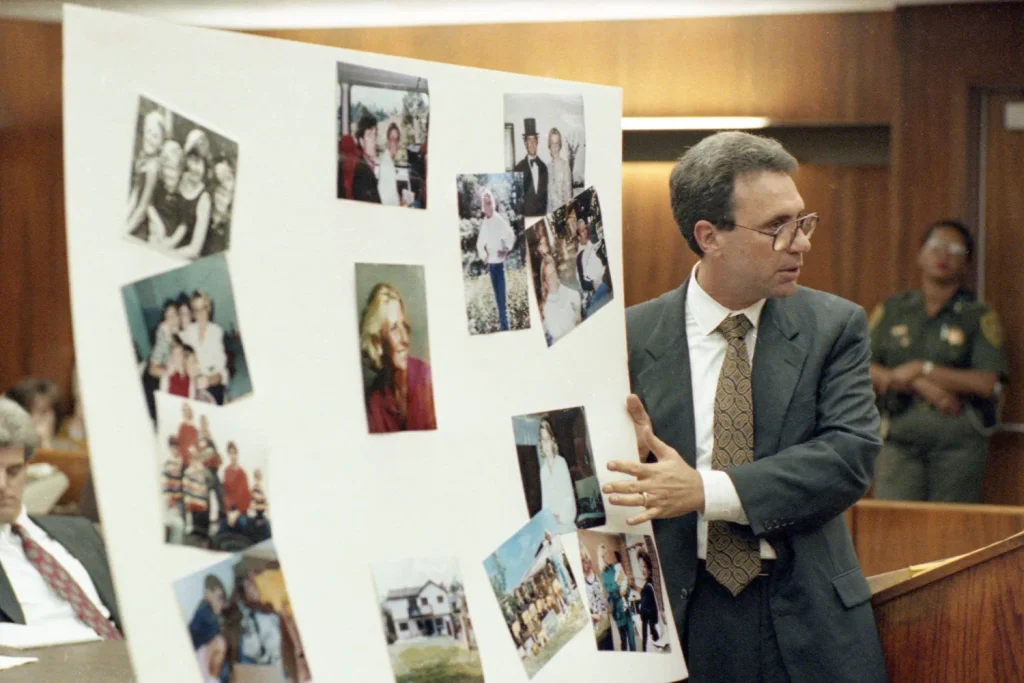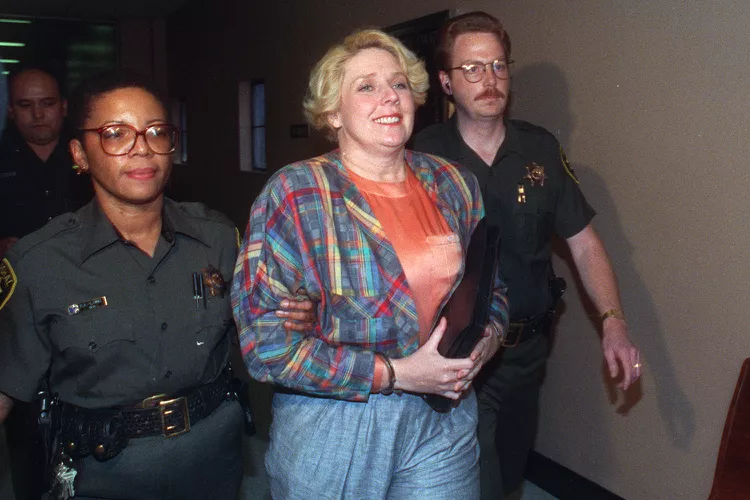36 Years Later, Betty Broderick Remains Behind Bars — Inside Her Life, Prison Years, and the Legacy of a Notorious Crime That Shook America
On November 5, 1989, the quiet San Diego neighborhood of Marston Hills woke up to a double murder that would go on to shock the nation. Betty Broderick, a once-respected housewife and mother of four, had entered the home of her ex-husband, Dan Broderick, and his new wife, Linda Kolkena Broderick, and fatally shot them both as they slept in their bed. It was the culmination of years of anger, betrayal, and obsession — a case that blurred the line between heartbreak and homicide. Thirty-six years later, Betty Broderick remains behind bars, her story still raising questions about justice, gender, and the emotional cost of divorce.

Betty’s life before that fateful night looked picture-perfect. She was born Elisabeth Anne Bisceglia in 1947, raised in a strict Catholic household in New York. She met Daniel T. Broderick III at Notre Dame in the mid-1960s, and they married soon after. Together, they built a seemingly ideal life — Dan became a successful medical malpractice attorney after earning both a law and medical degree from Harvard, while Betty took on the role of devoted wife and mother. For years, she supported the family financially while Dan was in school, taking on odd jobs and raising their children. When he finally became successful, they moved into a lavish La Jolla home and joined the upper ranks of San Diego society.

But their marriage began to crumble in the early 1980s. Betty suspected Dan was having an affair with his much younger assistant, Linda Kolkena — and by 1983, her fears were confirmed. The revelation devastated Betty, who felt she had sacrificed her youth and dreams for her husband’s career. The divorce that followed in 1985 quickly turned bitter, becoming one of California’s most viciously contested splits.

The court proceedings dragged on for years. Betty accused Dan of using his legal expertise to manipulate the system, controlling their finances, and turning their children against her. Dan, in turn, sought full custody, arguing that Betty’s increasingly erratic behavior — including vandalizing property, harassing phone calls, and leaving obscene messages — proved she was unstable. When Dan married Linda in April 1989, Betty’s resentment turned into rage. Friends described her as consumed by anger, feeling publicly humiliated and financially cornered.

On that November morning, Betty drove to Dan and Linda’s home on Coral Reef Avenue. She used a key that one of her children had given her and entered quietly around dawn. According to court testimony, she walked to the bedroom and fired five shots from a .38-caliber revolver. Linda was killed instantly. Dan was hit as he reached for the phone, unable to call for help. Betty later claimed she hadn’t meant to kill them — only to “confront” them — but prosecutors argued the act was deliberate and driven by years of escalating rage.

Her first trial in 1990 ended in a hung jury, but a retrial in 1991 led to her conviction on two counts of second-degree murder. Betty was sentenced to 32 years to life in prison. During her sentencing, she remained defiant, saying she had been provoked beyond endurance. “I didn’t want to kill them,” she told the court. “I just wanted him to listen.”

Today, Betty Broderick is 78 years old and incarcerated at the California Institution for Women in Chino, where she has spent more than three decades. Her life behind bars has been relatively quiet but not without controversy. Over the years, she has participated in interviews and documentaries, maintaining her belief that she was driven to her breaking point by psychological abuse and betrayal. In 2010, she told the San Diego Reader, “I’m a good person who did a bad thing. I made one terrible mistake, and I live with it every day.”

Betty has been eligible for parole twice, in 2010 and 2017, but both requests were denied. The parole board cited her lack of remorse and failure to take full responsibility for her actions. “She shows no insight into her crime,” the board concluded. Her next parole hearing is set for 2032, when she will be 84 years old. For now, she continues to live quietly in the same facility, sharing housing with other long-term inmates.
The Broderick case has never truly faded from public consciousness. It has inspired multiple books, documentaries, and dramatizations, including the 1992 TV movie A Woman Scorned: The Betty Broderick Story, starring Meredith Baxter, and the acclaimed Dirty John: The Betty Broderick Story on Netflix in 2020. Both portrayals reignited public fascination with the case, dividing audiences between those who see Betty as a victim of a manipulative husband and those who believe she remains unrepentant for an unforgivable act.
Her children, now adults, are divided as well. Two of them have advocated for their mother’s release, arguing that she is no longer a danger to society. One of her sons told People in a 2017 interview, “She’s lived her punishment. I think she deserves a chance at a normal life.” But her other children remain unconvinced, believing that their mother’s anger still burns beneath the surface. One daughter said during the 2010 parole hearing, “She’s still the same person. She’s never taken responsibility.”
Inside prison, Betty spends her days reading, writing letters, and occasionally corresponding with journalists. She receives visits from family members and a small circle of supporters who see her as an example of how emotional and financial abuse can destroy a person’s sense of control. However, prison officials have described her as sometimes combative and unwilling to participate in rehabilitation programs that could demonstrate remorse — factors that have repeatedly worked against her release.
For those who followed the case, the tragedy remains both personal and symbolic — a collision of love, power, and rage in a society that often underestimated the emotional toll of divorce. When People revisited the story in 2024, they described Betty as “aging but sharp,” someone who still believes the justice system failed her. She reportedly told a friend, “If I had been a man, they would have understood.”
While much of the world has moved on, the Broderick murders continue to fascinate new generations. True-crime enthusiasts still analyze court transcripts, debating whether Betty was pushed too far or whether her actions were premeditated. Legal experts have used her case in discussions about domestic turmoil, narcissism, and the limits of legal protection in emotionally charged divorces.
Even after 36 years, the story has an almost mythic quality — a cautionary tale about privilege, heartbreak, and revenge. Betty’s story unfolded in a world that idealized the American Dream: a big house, four children, and social status. But beneath the image was a marriage built on imbalance and resentment that eventually turned fatal.
Now, nearing her 80s, Betty remains confined, her name synonymous with both tragedy and obsession. Whether she ever walks free again remains uncertain, but her legacy — and the questions her case raised about love, control, and justice — endure. To some, she is the ultimate symbol of a woman scorned; to others, a murderer who refuses to repent. Either way, Betty Broderick’s story is far from forgotten.



